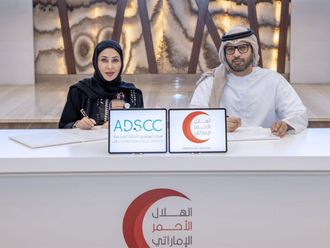The Dubai Health Authority (DHA)’s electronic medical record system, Salama, is now live in Rashid Hospital, Barsha Health Center, Airport Medical Center, Dermatology Center and Dubai Physiotherapy and Rehabilitation Center.
Salama, launched under the patronage of His Highness Shaikh Hamdan Bin Mohammad Bin Rashid Al Maktoum, Crown Prince of Dubai in February 2016, aims to provide patients and doctors access to medical records through a patient portal and ensure the electronic patient medical record is available across the DHA health facilities.
Amani Al Jassmi, Director of Information Technology at DHA said Salama would be implemented in Dubai Hospital, Dubai Diabetes Center and all Primary Health Care Centers during the second phase in August. The third phase in November will see it being implemented in Latifa Hospital, Hatta Hospital, Thalassemia Center and Dubai Gynecology and Fertility Center.
“So far, more than 1.4 million DHA patient medical records and more than 112
million transactions have been transferred to the
Salama system.
“To ensure a smooth transition, patients will be requested to provide their Emirates ID, medical card and health insurance,” she added.
Commenting on the new system, Al Jasmi said that Salama will allow vital patient information such as the patient’s medical history, surgery records, lab test results, X-ray reports and medication to be accessed by DHA physicians, nurses and clinicians from across DHA facilities, enhancing the patient experience.
This reduces waiting time among patients and reduces costs, while allowing them to communicate with doctors quickly. Al Jasmi said that in addition to features available through Salama, DHA has also integrated the patient portal with 25 core applications to allow a comprehensive view of the patient’s medical status.
She added that the project implementation is a vital milestone for the DHA to achieve the authority’s and Dubai Government’s ambition to move towards digital healthcare.
Al Jasmi added that the project will help improve patient care and patient safety as well as risk management and organisational quality.
She said that the healthcare providers will receive consolidated and integrated patient information, which gives providers a rapid, complete overview of the patient’s condition.
The system will also help facilitate automatic cross-referencing of medication and allergy interactions.
“It will provide real-time alerts, warnings, and flags to draw attention to changes in the patient medication or patient condition. Moreover, allergy warnings will always be displayed on the screen, which directly results in minimising any medication errors,” she concluded.













